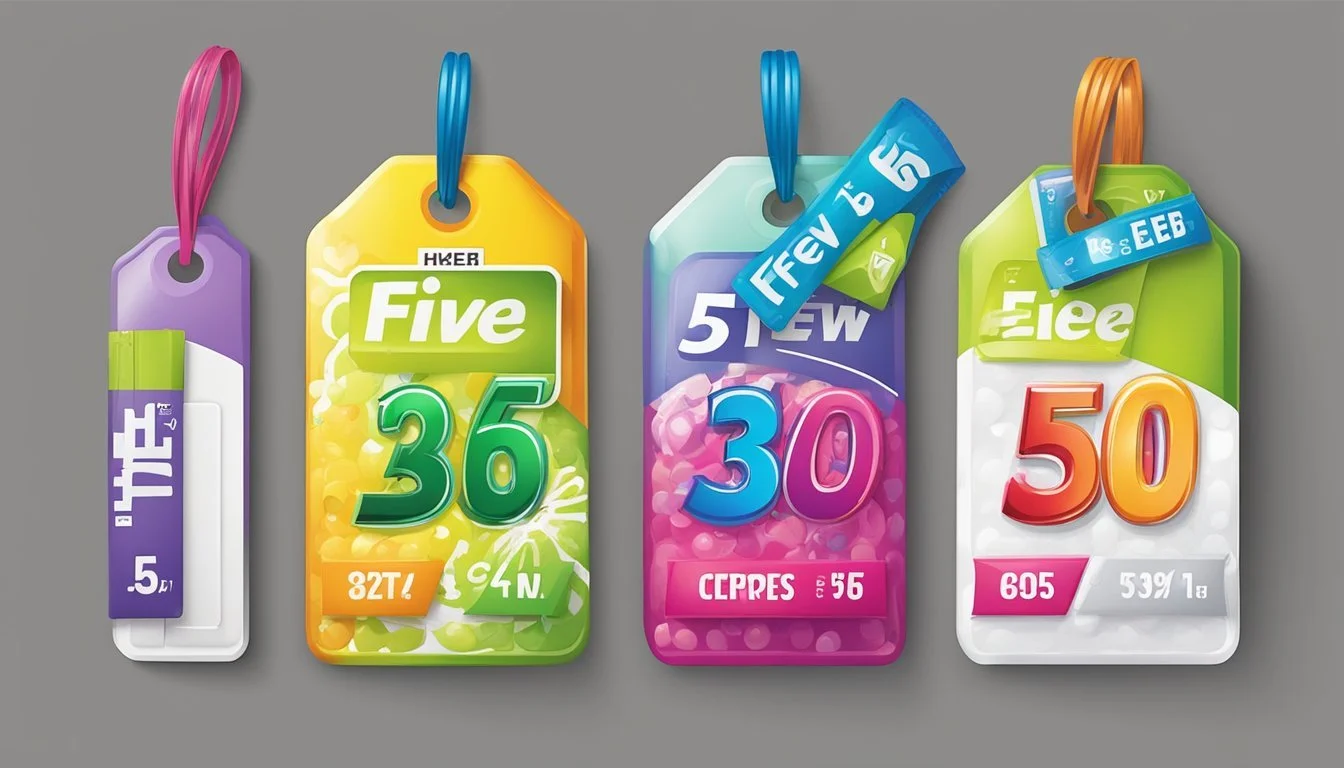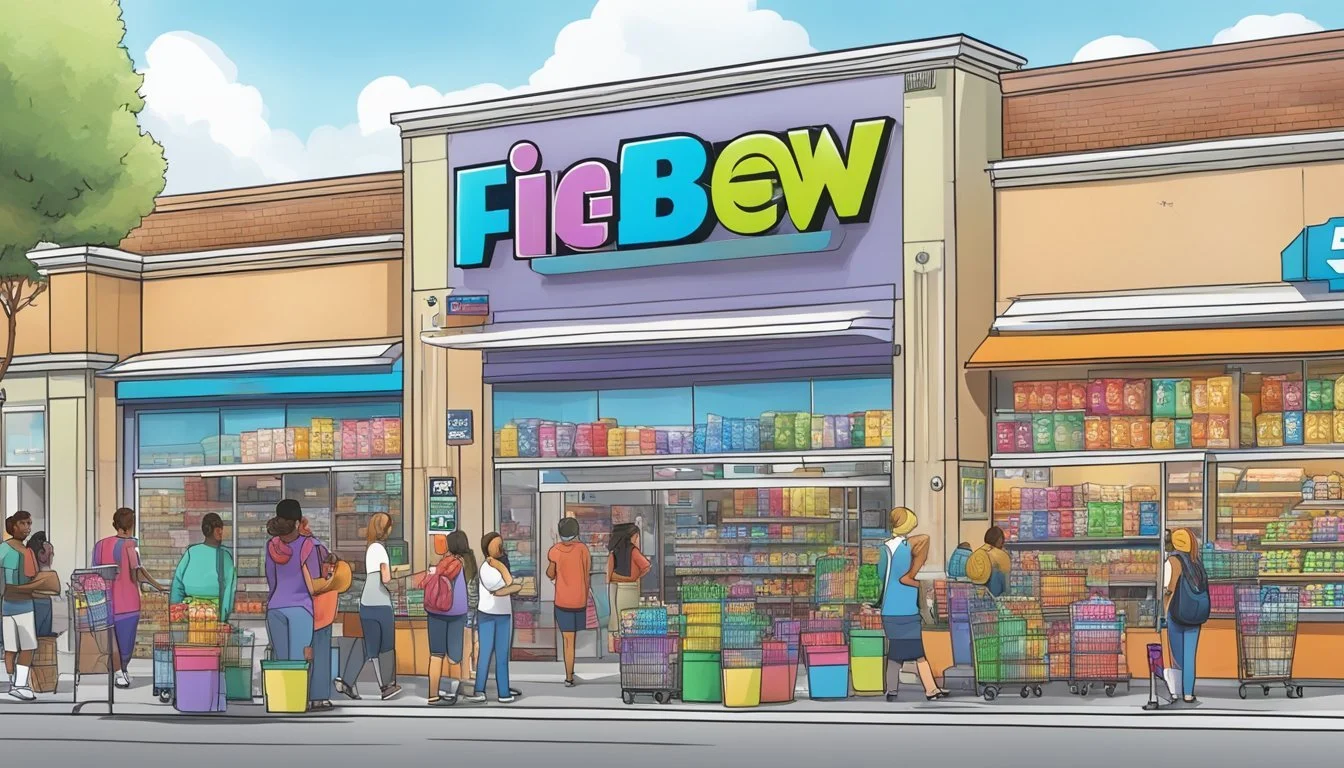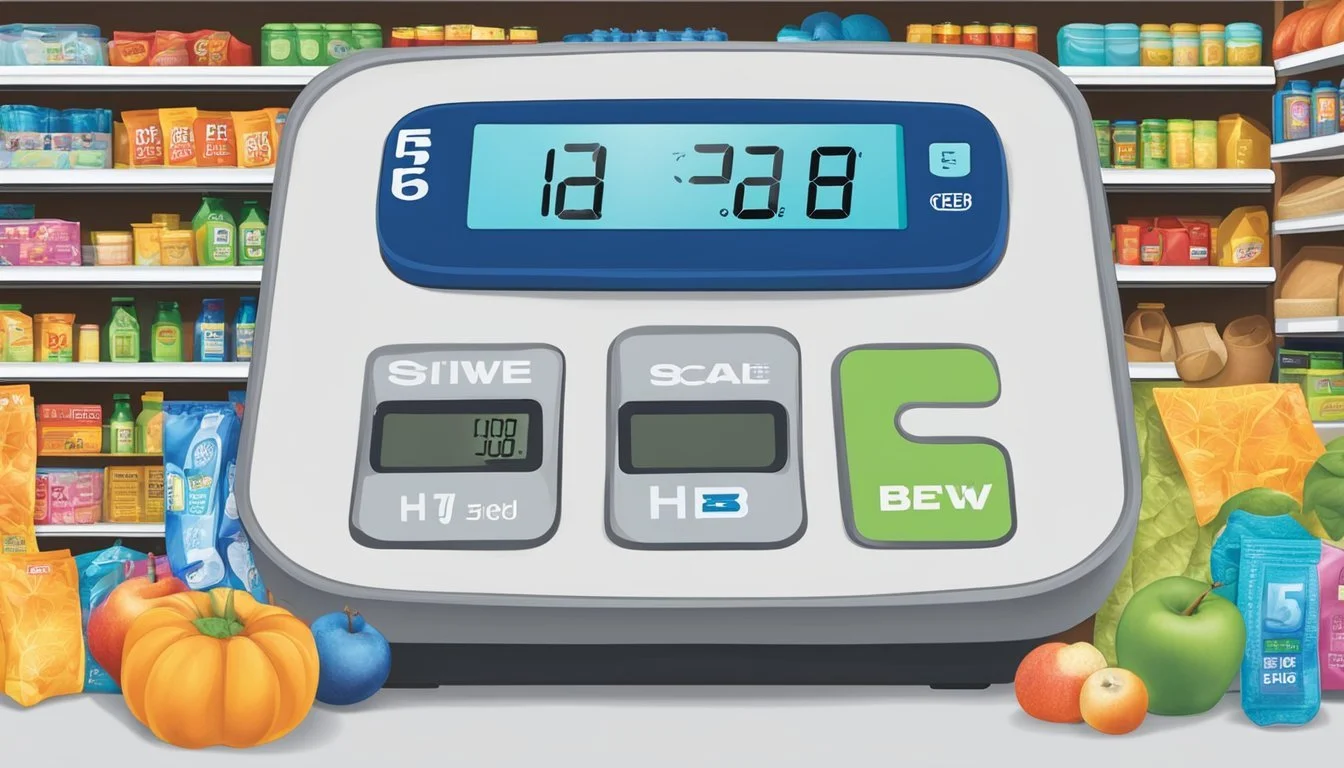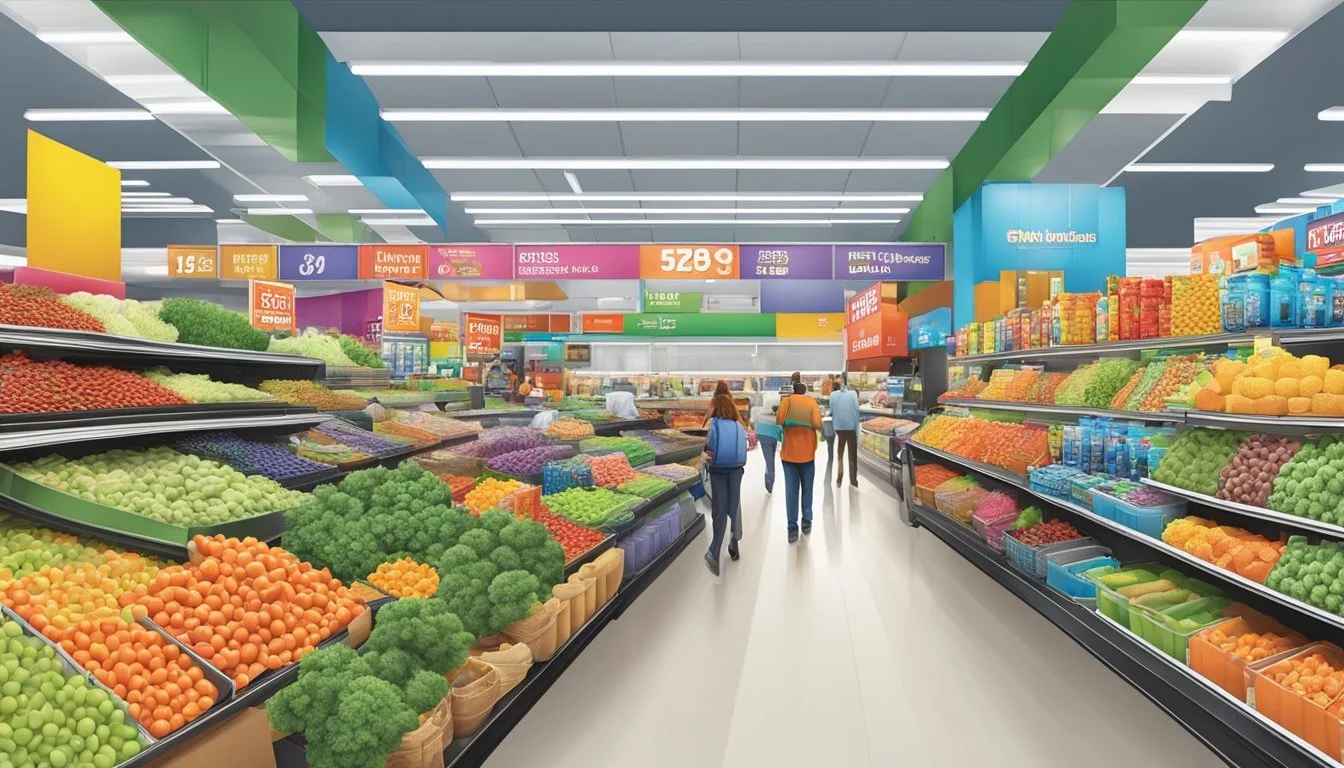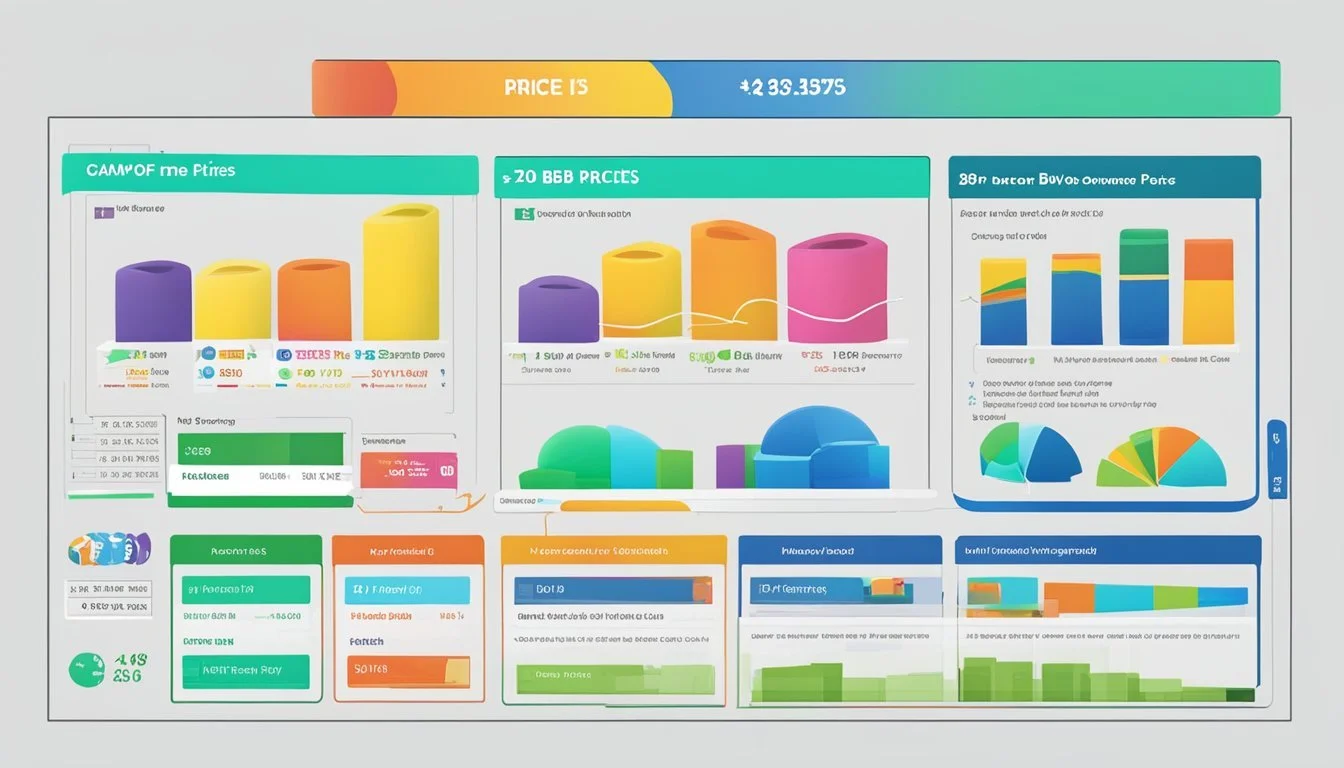Is Five Below Cheaper Than H-E-B?
A Price Comparison of Budget Retailers
Five Below and H-E-B are two popular retail chains in the United States, each with its own unique offerings and pricing strategies. While both stores aim to provide value to customers, they cater to different shopping needs and experiences.
Five Below generally offers lower prices on a variety of items compared to H-E-B, with most products priced at $5 or less. This discount specialty chain focuses on trendy merchandise, toys, tech accessories, and novelty items. H-E-B, primarily a grocery store, offers competitive pricing on food and household essentials, but also emphasizes local sourcing and customer service.
Shoppers looking for inexpensive gifts, party supplies, or small gadgets may find better deals at Five Below. However, those seeking groceries, fresh produce, and a wider range of household items will likely prefer H-E-B's selection and pricing structure. The choice between these stores ultimately depends on the specific products a customer needs and their overall shopping priorities.
Overview of Five Below
Five Below is a popular discount retail chain known for offering a wide range of products at low prices. The company has experienced rapid growth since its founding in 2002, expanding to over 1,200 stores across the United States.
Business Model
Five Below operates on a unique retail concept focused on providing trendy, affordable products to young consumers and bargain hunters. The company targets teens, tweens, and value-conscious shoppers by offering a constantly changing selection of merchandise. Five Below's strategy involves high-volume sales of low-priced items, allowing them to maintain profitability despite slim margins on individual products.
Five Below stores are typically located in high-traffic areas such as shopping centers and strip malls. The company's lean operations and efficient supply chain help keep costs down. By sourcing products directly from manufacturers and maintaining streamlined inventory management, Five Below can offer competitive prices while still generating healthy revenue.
Product Range
Five Below's product assortment spans multiple categories, catering to diverse customer interests. The store's inventory includes:
Tech accessories
Toys and games
Clothing and accessories
Beauty and personal care items
Home decor and party supplies
Sports and fitness gear
The retailer frequently introduces new products and rotates stock to keep the shopping experience fresh and exciting for customers. This dynamic inventory strategy encourages repeat visits and impulse purchases.
Pricing Strategy
Five Below's core pricing model revolves around offering products at $5 or less. However, in recent years, the company has introduced a "Ten Below" section in many stores, featuring items priced between $6 and $10. This move allows Five Below to expand its product range while maintaining its reputation for value.
Key aspects of Five Below's pricing strategy include:
Majority of items priced at $5 or less
Select products in the $6-$10 range
Occasional "Hot Stuff" items priced up to $25
Emphasis on perceived value rather than rock-bottom prices
Store Locations
Five Below has rapidly expanded its brick-and-mortar presence across the United States. The company targets high-visibility locations in shopping centers, power centers, and lifestyle centers. Five Below stores are typically found in suburban areas and smaller cities, with increasing expansion into urban markets.
Store characteristics:
Average size: 8,500 square feet
Open floor plan with wide aisles
Bright, colorful displays
Self-service model
Five Below continues to open new locations each year, focusing on both existing markets and new territories. The company's growth strategy includes penetrating underserved areas and increasing store density in established markets.
Overview of H-E-B
H-E-B is a prominent grocery chain known for its strong presence in Texas and parts of Mexico. The company offers a wide range of products, competitive pricing, and a focus on community engagement.
Company History
H-E-B was founded in 1905 by Florence Butt in Kerrville, Texas. The company's name stands for Howard E. Butt, Florence's son who expanded the business in the 1920s.
H-E-B has grown from a single store to become one of the largest privately-held companies in the United States. The Butt family continues to own and operate the business, maintaining its commitment to quality and customer service.
Throughout its history, H-E-B has focused on innovation and adapting to changing consumer needs. The company has introduced various store formats, including H-E-B Plus! and Central Market, to cater to different customer segments.
Product Offerings
H-E-B provides a diverse range of products to meet customer needs. The store's offerings include:
Fresh produce and meats
Bakery items
Dairy products
Prepared foods
Household essentials
Health and beauty products
Pet supplies
H-E-B is known for its extensive selection of private-label products, which often rival national brands in quality. The company also emphasizes locally sourced items, supporting Texas-based suppliers and producers.
Many H-E-B stores feature specialized departments such as seafood counters, floral sections, and wine and beer selections. Some locations offer additional services like pharmacies and optical centers.
Pricing and Value Proposition
H-E-B is recognized for its competitive pricing strategy. The company strives to offer affordable options without compromising on quality.
H-E-B's pricing approach includes:
Regular promotional deals and discounts
Price matching with competitors
Loyalty programs and digital coupons
Budget-friendly private-label alternatives
The grocery chain's value proposition extends beyond pricing. H-E-B focuses on providing high-quality products, excellent customer service, and a pleasant shopping experience.
H-E-B's commitment to value has helped it compete effectively against larger national chains and discount retailers in its operating regions.
Store Locations
H-E-B's store network is primarily concentrated in Texas, where it operates over 340 locations. The company has a significant presence in major metropolitan areas such as Houston, San Antonio, Austin, and Dallas-Fort Worth.
In addition to its Texas stores, H-E-B has expanded into northern Mexico, operating over 50 locations under the name "H-E-B Mexico."
H-E-B's store formats include:
Traditional H-E-B supermarkets
H-E-B Plus! (larger stores with expanded non-food departments)
Central Market (gourmet and specialty food stores)
Mi Tienda (catering to Hispanic communities)
The company strategically places its stores to serve diverse communities and meet varying customer preferences across its operating regions.
Comparing Prices and Quality
Five Below and H-E-B offer different shopping experiences with distinct pricing strategies and product quality. Their approaches cater to varying consumer needs and preferences.
Price Analysis
Five Below maintains a consistent pricing model, with most items priced at $5 or less. This strategy appeals to budget-conscious shoppers seeking affordable options. H-E-B, on the other hand, offers a wider range of prices across its diverse product selection.
Five Below focuses on non-grocery items like toys, accessories, and home decor. H-E-B primarily sells groceries and household essentials. This difference makes direct price comparisons challenging.
H-E-B often provides competitive prices on groceries, especially with its store brands. The retailer frequently offers sales and discounts to attract customers.
Quality Assessment
Five Below products are typically lower-priced alternatives to brand-name items. The quality can vary, with some products offering good value for money and others being less durable.
H-E-B is known for its commitment to quality, particularly in fresh produce and meats. The retailer's store brands often match or exceed national brand quality at lower prices.
Five Below's inventory changes frequently, introducing new items regularly. H-E-B maintains a more consistent product selection, allowing for long-term quality assessment by consumers.
Consumer Perceptions
Many shoppers view Five Below as a fun, affordable destination for impulse purchases and gifts. The store's $5-or-less concept is easily understood and appreciated by bargain hunters.
H-E-B has built a strong reputation in its operating regions. Customers often praise the chain for its balance of quality and value, especially in its grocery offerings.
Consumer loyalty to H-E-B is notably high in Texas, where the company originated. Five Below, while popular, doesn't typically inspire the same level of brand loyalty.
Shoppers often view H-E-B as a one-stop shop for household needs. Five Below is seen more as a specialty retailer for specific, low-cost items.
Product Categories Face-Off
Five Below and H-E-B offer distinct product selections across various categories. Their pricing and offerings differ significantly in key departments.
Beauty and Personal Care
Five Below provides budget-friendly beauty and personal care items. Their selection includes trendy makeup, skincare products, and hair accessories. Most items are priced at $5 or less.
H-E-B carries a wider range of beauty brands. Their offerings span from drugstore to premium options. Prices vary but generally exceed Five Below's $5 limit.
For basic personal care essentials, Five Below often has lower prices. H-E-B may offer better deals on larger sizes or multi-packs.
Home Decor and Electronics
Five Below specializes in affordable home decor and tech accessories. Their selection includes phone cases, chargers, and small gadgets. Decorative items like picture frames and wall art are also available.
H-E-B's home goods section is more limited. They focus on practical items like kitchen tools and bedding. Electronics are not a primary category for H-E-B.
Five Below is typically cheaper for small electronics and decor items. H-E-B may have better prices on higher-quality home essentials.
Toys and Games
Five Below excels in this category with a wide array of toys and games. Their selection includes board games, action figures, and craft kits. Most items are geared towards children and young teens.
H-E-B's toy section is smaller and more seasonal. They stock popular toys and games, especially during holidays. Prices at H-E-B are often higher than Five Below's $5 limit.
For budget-friendly toys and games, Five Below is generally cheaper. H-E-B may offer better deals on larger or more complex toys.
Food and Grocery Items
Five Below offers a limited selection of snacks and candy. Their focus is on novelty items and popular brands in small packages. Prices are typically $5 or less.
H-E-B is a full-service grocery store with a vast food selection. They carry fresh produce, meats, dairy, and pantry staples. Prices vary widely depending on the item and brand.
For small snacks and candy, Five Below may have lower prices. H-E-B offers better value on larger quantities and essential grocery items.
Shopping Experience Comparison
Five Below and H-E-B offer distinct shopping experiences tailored to their product offerings and target customers. Each store's layout, customer service, and checkout process contribute to their unique atmospheres.
Store Layout and Design
Five Below embraces a vibrant, youthful aesthetic with bright colors and eye-catching displays. The store's layout is typically open and spacious, allowing customers to easily navigate through various product sections. Items are arranged by category, with clear signage guiding shoppers to specific departments like tech accessories, beauty products, and snacks.
H-E-B stores, in contrast, feature a more traditional grocery store layout. The aisles are organized by food categories, with produce sections, bakery, deli, and meat departments along the perimeter. H-E-B's design often incorporates elements of local culture and community, creating a warm and inviting atmosphere for shoppers.
Customer Service
Five Below generally maintains a hands-off approach to customer service. Staff members are available to assist when needed but typically allow customers to browse independently. The store's target demographic of teens and young adults often prefer this self-service model.
H-E-B is known for its exceptional customer service. Employees are trained to be friendly, knowledgeable, and proactive in assisting shoppers. The store often staffs dedicated positions like in-store nutritionists or meal planners to provide specialized guidance to customers.
Checkout Process
Five Below's checkout process is designed for efficiency. The store often features multiple registers to handle high customer volumes, especially during busy shopping periods. Self-checkout kiosks are available in some locations, catering to customers who prefer a quick, autonomous experience.
H-E-B offers a variety of checkout options to accommodate different customer needs. Traditional cashier-operated lanes are available for those who prefer personal interaction or have large orders. Self-checkout stations are provided for customers with smaller purchases or those who prefer to scan their own items. Some H-E-B locations also offer curbside pickup and home delivery services, adding convenience to the shopping experience.
Market Position and Competition
Five Below and H-E-B occupy distinct niches in the retail landscape, each with unique strategies to attract budget-conscious shoppers. Their market positions and competitive approaches differ significantly based on product offerings and target demographics.
Competitors in the Low-Price Segment
Five Below competes primarily with dollar stores like Dollar Tree and Family Dollar. It also faces competition from discount chains such as Walmart and Target in the low-cost merchandise category.
H-E-B, as a grocery retailer, contends with supermarket giants like Walmart, Kroger, and Aldi. In Texas, H-E-B holds a strong regional position, competing against national chains and local grocers.
Both retailers encounter competition from online marketplaces like Amazon, which offer convenience and competitive pricing across various product categories.
Five Below and H-E-B's Competitive Edge
Five Below's unique selling proposition lies in its $5-and-below price point for trendy items appealing to teens and pre-teens. This focused approach sets it apart from traditional dollar stores and big-box retailers.
H-E-B leverages its strong Texas roots and tailored regional offerings to maintain customer loyalty. The chain is known for:
Competitive pricing on groceries
High-quality store brands
Locally sourced products
H-E-B's emphasis on fresh produce and prepared meals also differentiates it from discount chains like Aldi or Lidl. The retailer's ability to balance quality with affordability has helped it compete effectively against Walmart in the Texas market.
Consumer Insights and Trends
Shoppers are increasingly focused on finding the best value for their money. Many are comparing prices across different retailers to make informed decisions.
Five Below and H-E-B cater to distinct consumer needs. Five Below specializes in affordable trendy items and crafts, appealing to budget-conscious shoppers seeking fun purchases.
H-E-B, as a grocery chain, draws customers looking for everyday essentials and food items. Their pricing strategy aims to be competitive within the grocery sector.
Consumer behavior has shifted towards store-brand alternatives in recent years. This trend impacts both Five Below and H-E-B, as shoppers seek to maximize their purchasing power.
The shopping experience plays a crucial role in customer loyalty. Five Below offers a treasure hunt atmosphere, while H-E-B focuses on convenience and product variety.
Price comparisons between these retailers are challenging due to their different product offerings. Consumers often shop at both stores for different purposes, balancing low prices with specific needs.
Economic factors influence shopping habits. During tighter financial times, stores like Five Below may see increased traffic as consumers seek affordable options for non-essential items.

